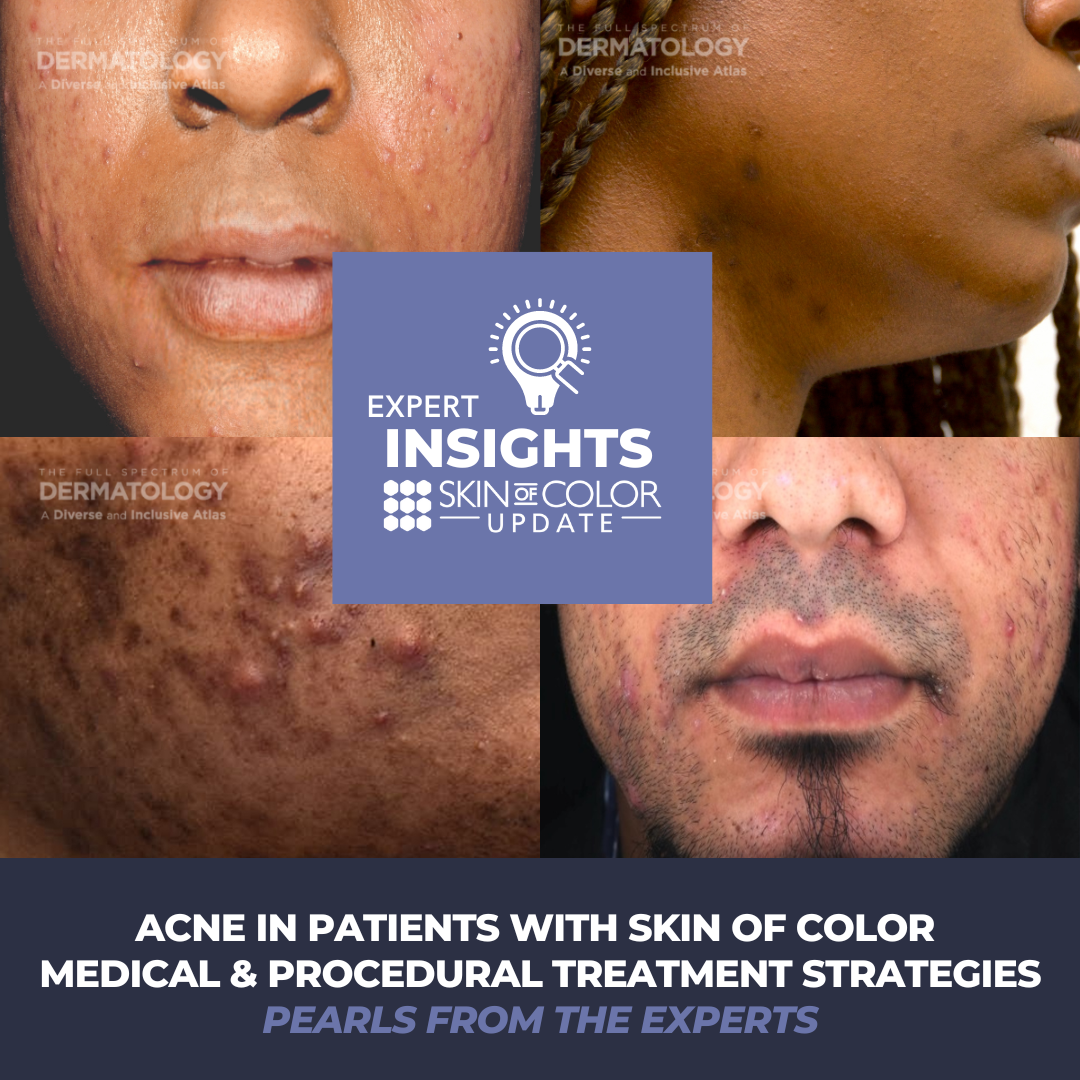Acne in Patients with Skin of Color: Medical & Procedural Treatment Strategies
 The 2023 Skin of Color Update in New York City featured a comprehensive discussion on the evolving landscape of treating acne, with a particular focus on medical and procedural approaches. Attendees had the unique opportunity to hear Dr. Valerie Callendar, professor of dermatology at Howard University College of Medicine in Washington, DC, and Dr. Andrew Alexis, Professor of Clinical Dermatology …
The 2023 Skin of Color Update in New York City featured a comprehensive discussion on the evolving landscape of treating acne, with a particular focus on medical and procedural approaches. Attendees had the unique opportunity to hear Dr. Valerie Callendar, professor of dermatology at Howard University College of Medicine in Washington, DC, and Dr. Andrew Alexis, Professor of Clinical Dermatology …
 The 2023 Skin of Color Update in New York City featured a comprehensive discussion on the evolving landscape of treating acne, with a particular focus on medical and procedural approaches. Attendees had the unique opportunity to hear Dr. Valerie Callendar, professor of dermatology at Howard University College of Medicine in Washington, DC, and Dr. Andrew Alexis, Professor of Clinical Dermatology …
The 2023 Skin of Color Update in New York City featured a comprehensive discussion on the evolving landscape of treating acne, with a particular focus on medical and procedural approaches. Attendees had the unique opportunity to hear Dr. Valerie Callendar, professor of dermatology at Howard University College of Medicine in Washington, DC, and Dr. Andrew Alexis, Professor of Clinical Dermatology … Continue reading "Acne in Patients with Skin of Color: Medical & Procedural Treatment Strategies"


 Don’t forget about intralesional therapy as a treatment option for cutaneous malignancies, including non-melanoma and melanoma skin cancers, says Dr. Vishal A. Patel, director of cutaneous oncology at the GW Cancer Center. Next Steps in Derm, in partnership with ODAC Dermatology, Aesthetic & Surgical Conference, interviewed Dr. Patel, who shared in which patients intralesional therapy may be …
Don’t forget about intralesional therapy as a treatment option for cutaneous malignancies, including non-melanoma and melanoma skin cancers, says Dr. Vishal A. Patel, director of cutaneous oncology at the GW Cancer Center. Next Steps in Derm, in partnership with ODAC Dermatology, Aesthetic & Surgical Conference, interviewed Dr. Patel, who shared in which patients intralesional therapy may be …  Laser-assisted drug delivery (LAD) is a new method of locally delivering treatments for some skin disorders. Dr. Jill Waibel, Subsection Chief of Dermatology at Baptist Hospital of Miami, shared pearls in the emerging technique at the inaugural Pigmentary Disorders Exchange Symposium. Continue reading this article for more information on this novel therapy.
The basics of laser-assisted delivery …
Laser-assisted drug delivery (LAD) is a new method of locally delivering treatments for some skin disorders. Dr. Jill Waibel, Subsection Chief of Dermatology at Baptist Hospital of Miami, shared pearls in the emerging technique at the inaugural Pigmentary Disorders Exchange Symposium. Continue reading this article for more information on this novel therapy.
The basics of laser-assisted delivery …  Next Steps in Derm, in partnership with Skin of Color Update, interviewed Dr. Eva Kerby, assistant professor of clinical dermatology at Weill Cornell Medical College. Dr. Kerby shares her preferred medical treatment options for keloids, and why it’s important to set treatment expectations with patients. Watch as Dr. Kerby shares tips for good injection technique and how to treat larger, nodul …
Next Steps in Derm, in partnership with Skin of Color Update, interviewed Dr. Eva Kerby, assistant professor of clinical dermatology at Weill Cornell Medical College. Dr. Kerby shares her preferred medical treatment options for keloids, and why it’s important to set treatment expectations with patients. Watch as Dr. Kerby shares tips for good injection technique and how to treat larger, nodul …  Patients with skin of color are at significantly higher risk of developing keloid scars compared with their fair-skinned counterparts. At the 2022 Skin of Color Update, Dr. Eva Kerby, Assistant Dermatology Professor at Weill Cornell Medicine, and Dr. Maritza Perez, Professor of Dermatology at the University of Connecticut, shared their pathogenesis-informed medical and procedural treatment strat …
Patients with skin of color are at significantly higher risk of developing keloid scars compared with their fair-skinned counterparts. At the 2022 Skin of Color Update, Dr. Eva Kerby, Assistant Dermatology Professor at Weill Cornell Medicine, and Dr. Maritza Perez, Professor of Dermatology at the University of Connecticut, shared their pathogenesis-informed medical and procedural treatment strat …